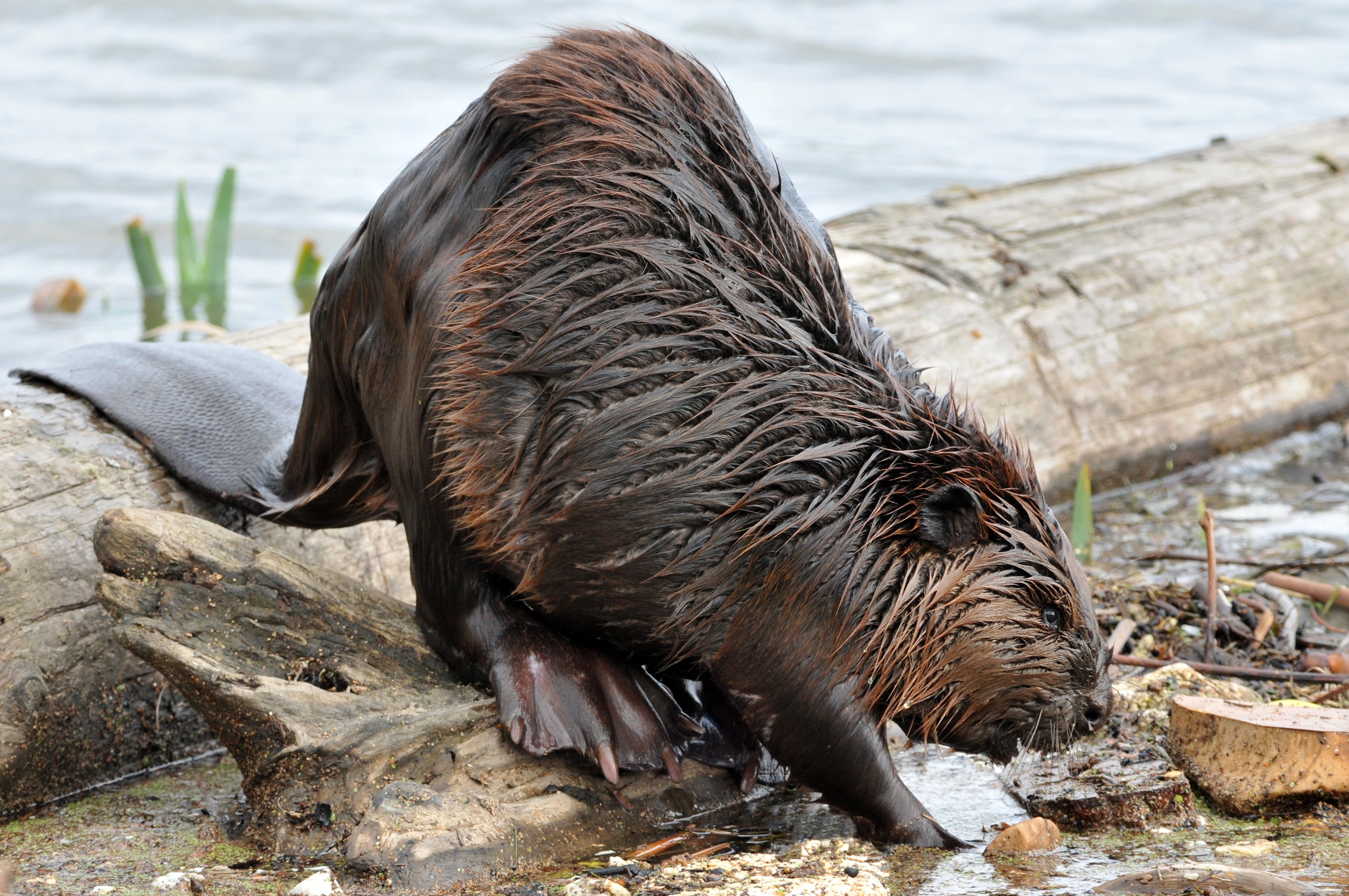Beavers, a Keystone Species
Beavers Help Counter Drought, Wildfires, and Species Extinction While Sequestering Carbon

In the early 1600s, when settlers first arrived in North America, an estimated 400 million beavers inhabited the continent. These early arrivals found a lush, fertile land. Immediately, they began putting their imprint on the territory. In less than 100 years, a demand for fashionable beaver hats in Europe started a trapping industry that flourished into the mid-1800s, when beavers became nearly extinct. The consequences have been profound: eroded streams, dried-up wetlands, and loss of vital habitat for salmon and countless other creatures that flourish in beaver-created ponds and marshes.
Wesley Roe (Santa Barbara Permaculture Network) brought to my attention an award-winning book titled Eager: The Surprising, Secret Life of Beavers and Why They Matter by the environmental journalist Ben Goldfarb. It documents the difficulty beavers are having in regaining a presence in their former land. Naturalists and conservationists actively campaigned for their protection in the early 20th century, but just as beavers started reestablishing a foothold, farmers and ranchers started shooting them as pests due to their penchant for damming irrigation ditches.
Although there are still conflicted attitudes toward beavers among segments of society, and government agencies frequently work at cross purposes regarding beavers’ reestablishment, things are finally beginning to look up for these industrious workers. Water is the most important resource for a farmer or rancher, and beavers are masters at water capture. Ranchers, even in the arid West, are finding that their pasturelands and hayfields are lusher when beavers are nearby. A few are even advocating for their return.
Rather than being killed on agricultural lands, beavers are now being captured and relocated to areas where they can transform wildlands and watersheds. These creatures, critical to the health of ecosystems, are miracle workers for recharging ground water, spreading rivers and creeks across flood plains, and restructuring the landscape to allow water to percolate into aquifers.
Beavers help counter drought, flooding, wildfire, extinction, and the ravages of climate change. In warming California, snowpack reservoirs are disappearing as a result of precipitation falling more often as rain than snow. This leads to faster runoff; long, parched months; and drought. The ponds and pools formed by beavers slow runoff, enhance biodiversity, and store enormous amounts of carbon in the form of settled-out organic matter. Beavers help quell wildfire by spreading dampness and thinning flammable understory brush.
Through diligent work, government biologists, in collaboration with locals, have restored beavers to 20 percent of their former haunts in the Pacific Northwest. Because the landscape has changed greatly, it is hard to believe that beavers used to be native to Southern California. Yet they can be returned to many of our local stream headwaters. Wouldn’t it be wonderful to keep our ephemeral creeks flowing year-round? An abundance of frogs, steelhead trout, herons, woodpeckers, songbirds, and bats would accompany such changes.



